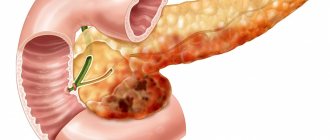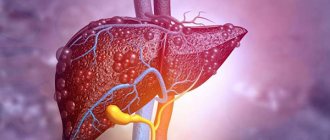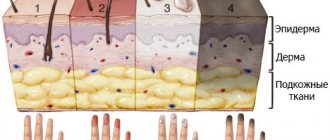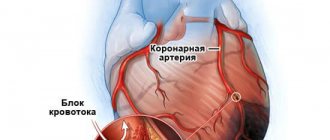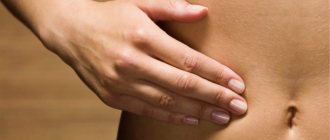Acute cholecystitis - symptoms and treatment
Patients with acute cholecystitis are subject to emergency hospitalization in the surgical department of the hospital. After carrying out the necessary diagnostic measures, further treatment tactics are determined. In the presence of severe complications - perivesical abscess, destructive cholecystitis with peritonitis - patients are subject to emergency surgery after short-term preoperative preparation.[1]
Preparation consists of restoring the volume of circulating blood, detoxification therapy by infusion of crystalloid solutions in a volume of 2-3 liters. If necessary, correction of cardiac and respiratory failure is carried out. Perioperative antibiotic prophylaxis is performed (before, during and after surgery).
The surgical approach is selected depending on the technical capabilities of the clinic, the individual characteristics of the patient and the qualifications of the surgeon. The most commonly used is the laparoscopic approach, which is the least traumatic and allows for full inspection and sanitation.[12]
The mini-access is not inferior to the laparoscopic approach in terms of morbidity and has the advantage of eliminating the need to apply pneumoperitoneum (limit the mobility of the diaphragm).[10] If technical difficulties arise, severe adhesions in the abdominal cavity and diffuse peritonitis, it is more advisable to use a laparotomic approach: upper midline laparotomy, Kocher, Fedorov, Rio Branca access. In this case, the upper midline laparotomy is less traumatic, since in this case the muscles are not intersected, however, with oblique subcostal approaches, the subhepatic space is more adequately opened for surgical intervention.
The operation consists of performing a cholecystectomy. It should be noted that the presence of perivesical infiltrate implies certain technical difficulties in mobilizing the neck of the gallbladder. This leads to an increased risk of damage to elements of the hepatoduodenal ligament.[13] In this regard, one should not forget about the possibility of performing cholecystectomy from the fundus, which allows for more clear identification of the elements of the cervix.[16]
There is also the “Pribrama” operation, which consists of removing the anterior (lower) wall of the gallbladder, suturing the cystic duct in the neck area and mucoclasia (removal of the mucous membrane) by electrocoagulation of the posterior (upper) wall. Performing this operation with a pronounced infiltrate in the area of the bladder neck will avoid the risk of iatrogenic damage. It is applicable for both laparotomic and laparoscopic approaches.
If there are no severe complications of acute cholecystitis, then upon admission of the patient to the hospital, conservative therapy , aimed at unblocking the gallbladder. Antispasmodics, anticholinergics, infusion therapy are used to relieve intoxication, and antibiotics are prescribed.
An effective method is to block the round ligament of the liver with a solution of novocaine. The blockade can be performed either blindly using a special technique, or under the control of a laparoscope when performing diagnostic laparoscopy and under ultrasound guidance.
If conservative therapy is ineffective within 24 hours, the question of radical surgery—cholecystectomy—is raised.
Of no small importance for determining treatment tactics is the time that has passed since the onset of the disease. If the interval is up to five days, then cholecystectomy is feasible; if it is more than five days, then it is better to adhere to the most conservative tactics in the absence of indications for emergency surgery. The fact is that in the early stages the perivesical infiltrate is still quite loose, it can be divided during surgery. Later, the infiltrate becomes dense, and attempts to separate it may result in complications. Of course, a period of five days is quite arbitrary.
If there is no effect from conservative treatment and there are contraindications for radical surgery - severe pathology of the cardiovascular and respiratory systems, five days have passed since the onset of the disease - it is better to resort to decompression of the gallbladder by applying cholecystostomy.[4]
Cholecystoma can be performed in three ways: from a mini-access, under laparoscopic control and under ultrasound control.[9] The most minimally traumatic procedure is to perform this operation under ultrasound guidance and local anesthesia.[3] Single and double punctures of the gallbladder with sanitation of its lumen under ultrasound guidance are also effective.[7] A necessary condition is the passage of the puncture channel through the liver tissue to prevent bile leakage.
After stopping the acute inflammatory process, radical surgery is performed in a cold period after three months. Usually this time is enough for the perivesical infiltrate to resolve.
Publications in the media
Acute cholecystitis is an acute inflammation of the gallbladder. Frequency . Women over 40 years of age who are obese are more often affected. Acalculous cholecystitis most often develops in men.
Classification • Acute catarrhal cholecystitis. Inflammation is limited to the mucous and submucous membranes • Phlegmonous cholecystitis - purulent inflammation with infiltration of all layers of the gallbladder. Possible ulceration of the mucous membrane with subsequent exudation of inflammatory fluid into the paravesical space • Gangrenous cholecystitis - partial or total necrosis of the gallbladder wall. When the bladder wall is perforated, bile leaks into the abdominal cavity (gangrenous-perforative cholecystitis). Empyema of the gallbladder is purulent inflammation of the gallbladder.
Etiology • In 95% of cases, it develops due to obstruction of the cystic duct by a stone • Intestinal microflora is most often cultured from the wall of the gallbladder • Acalculous cholecystitis (5–10% of cases of acute cholecystitis in adults, up to 30% in children) can be associated with major surgical interventions, multiple injuries, extensive burns, recent childbirth, sepsis, salmonellosis, prolonged fasting, parenteral nutrition.
Pathogenesis • Stone obstruction leads to stagnation of bile and irritation of the gallbladder wall • Increased pressure in the gallbladder can lead to compression of the vessels of the gallbladder wall and its necrosis • Bacteria deconjugate bile salts with the formation of toxic bile acids that damage the mucous membrane of the gallbladder • In the pathogenesis of acalculous cholecystitis The significance of bile stagnation against the background of gallbladder paresis, an increase in its viscosity and lithogenicity have been established.
Pathomorphology • The gallbladder is distended, dull, contains turbid fluid or pus • Histologically, swelling of the wall and hemorrhages in the submucosa are revealed • As inflammation subsides, fibrosis develops.
Clinical manifestations
• Pain (hepatic colic) •• Localized in the epigastric or right hypochondrium •• Radiates to the back below the angle of the right shoulder blade, right shoulder, less often to the left half of the body •• Occurs at night or early in the morning, increases to a certain level and lasts 30–60 min without decreasing •• The occurrence of pain may be preceded by the consumption of fatty, hot, spicy foods, alcohol, emotional experiences •• Accompanied by increased sweating, a grimace of pain on the face and a forced posture - on the side with legs tucked to the stomach • Fever • Nausea, vomiting, sometimes with an admixture of bile • Shallow breathing, the stomach is weakly involved in the act of breathing • Murphy's symptom - involuntary holding of breath during inspiration with pressure on the right hypochondrium • Pain when inhaling during palpation of the right hypochondrium (Keur's symptom) • Pain when tapping along the edge of the right costal arch (Ortner's symptom) • Geno de Mussy-Georgievsky's symptom (phrenicus symptom) - pain when pressing with a finger between the legs of the right sternocleidomastoid muscle • Shchetkin-Blumberg's symptom becomes positive when the peritoneum is involved in the inflammatory process (peritonitis) • Jaundice (in 15% of patients) - caused by obstruction of the common bile duct with stones • On percussion of the abdomen - tympanitis (reflex intestinal paresis).
Laboratory tests • Blood test - leukocytosis, moderate shift of the leukocyte formula to the left • In 10-15% of patients (with concomitant choledocholithiasis, with acalculous cholecystitis), the concentrations of alkaline phosphatase and bilirubin are increased in the serum, bilirubin appears in the urine, with complete stone obstruction - urobilin disappears • Patients with fever may have positive blood cultures.
Instrumental studies • General radiography is performed for abdominal pain of unknown etiology • Ultrasound of the gallbladder reveals stones, thickening of the gallbladder wall, accumulation of fluid around it, with acalculous cholecystitis - gas in the bladder wall and detachment of the mucous membrane • Radioisotope scanning visualizes the common bile duct and intestines without filling the gallbladder indicates obstruction of the cystic duct (with acalculous cholecystitis, the method gives a large number of false positive results).
Differential diagnosis • Perforated or penetrating ulcer of the stomach and/or duodenum • MI • Pancreatitis • Hiatal hernia • Right lower lobe pneumonia • Acute appendicitis • Hepatitis • Infectious diseases.
TREATMENT
Diet . At the beginning of an attack of acute cholecystitis - a water-tea break • After 5-10 days, diet No. 5a is prescribed • If all acute phenomena disappear after 3-4 weeks - switch to diet No. 5.
Conservative treatment • Bed rest • Antispasmodics • Painkillers • Intravenous fluids • Antibacterial therapy •• If the patient is in a stable condition with pain and mild fever - ampicillin (4-6 g/day) •• For severe septicemia - a combination of gentamicin (3-5 mg /kg/day) with clinadmicin (1.8–2.7 g/day) or metronidazole with third generation cephalosporins, or imipenem + cilastatin.
Surgical treatment • The method of choice is early (within the first 72 hours) laparoscopic cholecystectomy, because with such an operation, mortality and the incidence of complications are lower than with a planned operation performed after 6-8 weeks of conservative treatment • Patients with acute cholecystitis, complicated peritonitis, gangrenous cholecystitis, perforation of the gallbladder wall are subject to • Percutaneous cholecystostomy in combination with antibacterial therapy - method of choice in the treatment of seriously ill patients, elderly patients with complications of acute cholecystitis • Emergency cholecystectomy is indicated for patients with acalculous cholecystitis; in case of critical condition of the patient, percutaneous cholecytostomy is performed under ultrasound control.
Complications • Empyema - acute purulent inflammation of the gallbladder • Perforation (15% of cases) •• Into the free abdominal cavity, the course is acute, mortality 30% •• Local - leads to the development of a peri-vesical abscess, the course is subacute •• Into the adjacent organ (duodenum, jejunum , colon or stomach), chronic course with the formation of a vesico-intestinal fistula • Sepsis • Pancreatitis.
Course and prognosis of the disease • In 85% of cases - spontaneous recovery, in 1/3 of patients a new attack develops within 3 months • Rapid progression of cholecystitis to gangrene or empyema of the gallbladder, formation of fistulas, intrahepatic abscesses, development of peritonitis is possible • Mortality in complicated cholecystitis reaches 50–60% • Mortality with acalculous cholecystitis is 2 times higher than with calculous cholecystitis, gangrene and perforation develop more often.
ICD-10 • K81 Cholecystitis
Diagnostics
Manual methods. To correctly diagnose acute cholecystitis, during the survey it is necessary to identify violations in the diet or the presence of stressful conditions, determine the symptoms of biliary colic, and palpate the abdominal wall.
Ultrasound. If there is a suspicion of acute inflammation of the gallbladder, it is necessary to perform an ultrasound of the abdominal organs. With its help, it is possible to record the enlargement of the organ, the absence or presence of stones in it.
CT (computed tomography). Computed tomography can provide a more detailed picture of the condition of the abdominal organs. To examine the bile ducts in detail, the ERCP (endoscopic retrograde cholangiopancreatography) technique is used.
Blood analysis. Allows you to identify signs of acute disease: leukocytosis, high ESR, bilirubinemia and dysproteinemia, increased enzyme activity (aminotransferases, amylase).
general description
Cholecystitis is an inflammatory disease of the gallbladder, a consequence of complications of gallstone disease.
Inflammation occurs due to a violation of the outflow of bile from the gallbladder and the presence of pathogenic microflora in the wall of the bladder. Cholecystitis often affects people over 50 years of age, but it also occurs at an earlier age. In the scientific literature, cases of an attack of biliary colic in children 11-15 years old have been recorded. Elderly people aged 60-75 years and senile people account for 35-55% of the total number of cases of cholecystitis.
Cholecystitis can be: acute (according to the morphological picture it is divided into: catarrhal, phlegmonous and gangrenous) and chronic.
Etiology
Main signs of acute cholecystitis
:
- penetration and spread of infection,
- obstruction of the duct with a stone.
If there is no retention of bile in the bladder, then if an infection enters its cavity, the inflammatory process will not develop.
Causes of acute cholecystitis
:
- the appearance of stones in the gallbladder,
- kinks and bends of the ducts.
But, without stones, cholecystitis occurs only in 5-10% of cases.
Why does chronic cholecystitis develop:
- Burn disease, major surgeries, skepticism and trauma.
- Prolonged fasting or parenteral nutrition, which leads to stagnation of bile.
Symptoms
At the initial stage, cramping sensations appear, which later, due to the increase in inflammation, become constant and more intense. This process can continue for several hours in a row along with vomiting. Characterized by a coated and dry tongue. Since the inflammation continues beyond the gallbladder, the mobility of the abdominal wall on the right during breathing is limited. In mild cases of the inflammatory process, body temperature rises to 37.5 to 38 °C, and in severe cases – up to 40 °C. The patient feels chills. The number of leukocytes in the blood increases.
The Ortner-Grekov symptom is observed, which is characterized by tingling in the right hypochondrium. When palpating the gallbladder, patients experience pain, which is more clearly manifested during deep inspiration (Murphy's symptom). Aggravating circumstances are expressed in blockage of the bile ducts. This leads to bloating, belching, nausea, jaundice, and a feeling of heaviness in the pit of the stomach. The described symptoms indicate increasing intoxication, dry mouth occurs, and gag reflexes become more frequent.
Causes
Among the reasons, the main ones are:
- blockage of the gallbladder duct with a stone;
- entry and propagation of infection.
In the case when the drainage function is not impaired and there is no bile retention, the infection does not cause inflammation when it enters the gallbladder.
Causes of impaired outflow of bile from the bladder:
- stones;
- kinks of the elongated or tortuous cystic duct, as well as its narrowing.
Acalculous cholecystitis accounts for about 5−10% of the total number of cases of acute cholecystitis.
The main risk factors for the development of acute cholecystitis:
- severe illnesses (major operations, burns, injuries, sepsis);
- total parenteral nutrition and prolonged fasting, which provoke bile stagnation.
Symptoms of cholecystitis
Acute cholecystitis:
- Characterized by paroxysmal pain in the left hypochondrium, which can radiate to the right shoulder, scapula
- Nausea, vomiting
- Increase in body temperature to 38-38.5 C with chills
- The appearance of yellowness of the sclera, skin, itching
Chronic cholecystitis:
- Nausea.
- Dull aching pain in the right hypochondrium
- Bitterness in the mouth
- Possible prolonged low-grade fever
- Bloating
- Diarrhea
Diagnostics:
- General clinical analysis of blood and urine
- General analysis of stool for coprogram.
- Biochemical blood test (liver tests, cholesterol, alkaline phosphatase, amylase, glucose)
- Ultrasound of the hepatobiliary system
- ECG
- Cholecystocholangiography
- ERCP (endoscopic retrograde cholangiopancreatography)
Laparoscopic surgery
This section of our website is dedicated to a very common disease among the adult population – cholecystitis.
Cholecystitis: what is it?
The term means a disease of the gallbladder, in which inflammation begins in its walls.
The gallbladder is a hollow organ that is in close contact with the lower surface of the liver. The bladder collects bile, which is constantly produced in the liver (it enters here through the hepatic ducts). The gallbladder is a kind of reservoir from which bile, if necessary, enters the duodenum in portions to digest food.
The capacity of the bladder is small, only 50 ml, but its importance for the normal functioning of the entire digestive tract is great. Inflammation most often begins due to injury to the inner surface of the bladder by dense formations - gallstones. Damaged walls become very vulnerable to microorganisms; they quickly become infected. If the patient does not have gallstones, then there is always a violation of the outflow of bile (biliary dyskinesia) and pathological changes in its composition (dyscholia).
Microbes enter the gallbladder in several ways:
- From the intestines, with the return of bile into the bladder. Reverse reflux occurs in diseases of the gastrointestinal tract (gastrointestinal tract) - duodenitis, pancreatitis, etc. And also when there is difficulty in the outflow of bile from the bladder (parasitic infections (ascariasis, giardiasis) or tumors of the biliary tract);
- With blood and lymph, in the presence of any foci of infection in the body: tonsillitis, periodontal disease, dysbacteriosis, appendicitis, inflammation in the genitourinary system (adnexitis, cystitis, pyelonephritis, etc.),
Both chronic cholecystitis and the acute form of the disease have become real leaders among the pathologies of the gastrointestinal tract in people over 40 years of age. Women suffer from this pathology 4 times more often than men (it is believed that the reason for this is the use of oral contraceptives and hormonal changes during pregnancy). For example, among all calls for acute abdomen to emergency surgical hospitals, acute cholecystitis takes 2nd place after acute appendicitis (up to 19% of all calls).
Among therapeutic specialists, patients with chronic inflammation of the gallbladder occur with a frequency of 1 case per 10 visits (among cases of non-oncological diseases).
Common causes of the disease
Most often, the occurrence of acute cholecystitis is usually associated with the formation of stones in it, which over time disrupt the normal outflow of bile and provoke the onset of inflammation of the mucous membrane of the organ. Less commonly, the pathological process begins to develop due to tumor formation in the biliary tract or against the background of diseases of the ductal system. As a rule, the onset of exacerbation is noted soon after eating fried or fatty foods.
Why has the disease become so common? The answer lies in changing the diet and lifestyle of the population:
- Irregular meals;
- Abuse of too fatty, fried or spicy foods;
- Insufficient physical activity;
- Bad habits (especially drinking alcohol);
- Metabolic disorders of an endocrine nature, again due to poor nutrition (diabetes mellitus, obesity).
All this leads to a change in the chemical composition of the bile produced, the frequent appearance of stones in the gall bladder and, as a consequence, inflammatory processes in it. Another reason may be a congenital anomaly in the structure and location of the gallbladder and its excretory ducts (the presence of kinks or narrowings). When, due to difficulty in outflow, stagnation of the bladder contents and further pathological processes (inflammation, stone formation) begin.
The main manifestations of acute cholecystitis or exacerbation of chronic
The most common manifestations of the disease include the following:
- Intense aching pain in the hypochondrium on the right.
- Nausea.
- Vomit.
- Pain in the right shoulder, as well as in the right side of the back.
- Increased body temperature.
What is chronic cholecystitis and acute cholecystitis?
The form of pathological inflammation in the gallbladder depends on the severity of the causative factors and characteristics of the human body. There are acute and chronic cholecystitis. The symptoms of these forms of the disease may be similar. Acute cholecystitis is a surgical pathology that requires emergency diagnosis and early treatment. Since complications of cholecystitis can develop very quickly and lead to a terminal condition of the patient.
Acute cholecystitis can be acalculous (very rare) and calculous (in the presence of stones in the bladder). After examination, if acute inflammation without stones is diagnosed, intensive treatment without surgery may be sufficient. With timely identification of the symptoms of cholecystitis and treatment in adults, the condition can be treated without consequences. With inadequate therapy or no treatment at all, the disease can become chronic. Signs of a chronic form of inflammation of the gallbladder are pain in the abdomen, in the right hypochondrium, or behind the sternum (sometimes similar to pain with angina). Bloating, nausea, belching (air or bitter), heartburn. Alternating constipation and diarrhea.
Acute acalculous cholecystitis: treatment includes a mandatory strict “liver” diet and a regimen of limited physical activity. Plus taking antibiotics, antispasmodics, painkillers and choleretic drugs. After an exacerbation, physiotherapeutic treatment is possible.
The presence of stones in acute cholecystitis is always an additional risk factor, aggravating the prognosis and treatment of the disease. With the calculous form, the risk of complications is high, so usually when treating it, they resort to removing the gallbladder (cholecystectomy).
Complications of cholecystitis are very serious conditions that require long-term treatment:
- local or diffuse peritonitis;
- liver abscesses;
- pancreatitis;
- cholangitis (inflammation of the bile ducts);
- gangrenous or phlegmonous cholecystitis;
- rupture of the bladder or its perforation (formation of a hole in the wall).
In the calculous form of the disease, a gallstone can block the bile duct, sometimes completely. Sharp pain appears, usually in the upper right abdomen. Signs of intoxication are very pronounced (chills, fever, nausea, vomiting). Due to impaired excretion of bile, signs of obstructive jaundice (yellowness of the skin and sclera) and discoloration of feces appear.
Chronic cholecystitis symptoms and treatment
Chronic cholecystitis is a constant inflammation in the gallbladder, occurring with periods of exacerbation and remission (imaginary recovery). Sometimes the activity of the inflammatory process decreases sharply and nothing bothers the patient. But when exposed to provoking factors, the signs of chronic cholecystitis reappear, bringing considerable suffering to the patient. The disease can begin before the age of 30. Chronic cholecystitis worsens with errors in diet (eating fatty, spicy foods, drinking alcoholic beverages). In most cases, chronic cholecystitis is accompanied by the presence of cholelithiasis (cholelithiasis).
Symptoms of the disease:
- Pain. At chronic cholecystitis symptoms are manifested primarily by pain. It is described by patients as aching, bursting. The location of pain may create some difficulties during diagnosis. These can be the supraclavicular fossa, the subscapular region, and the area behind the sternum. The latter localization causes it to simulate angina in coronary artery disease (coronary artery disease), accompanied by arrhythmias and palpitations. This symptom complex is called cholecystocardial syndrome, and it arises, among other things, from a toxic effect on the heart muscle. The intensity of pain may change when the solar plexus is involved in the inflammatory process (solar syndrome). Burning, unbearable pain appears in the navel area, radiating to the back.
- Nausea in chronic cholecystitis is a common symptom, as is vomiting. They occur in half of patients with concomitant gastroduodenitis and pancreatitis. Usually there is an admixture of bile in the vomit.
- Bitterness in the mouth, bitter belching is the most common complaint.
- Skin itching . Appears in case of bile excretion disorders, from skin irritation with bile acids.
- , fever, chills, jaundice , and activation of allergic diseases may occur
How to treat chronic cholecystitis
At chronic Treatment for cholecystitis always begins with nutritional correction. The diet is the same as for the acute form of the disease. Bed rest is prescribed in the first days of an exacerbation, after which the restrictions are gradually lifted. It is mandatory to take antibacterial drugs and anti-inflammatory therapy. According to the doctor’s recommendations, in some cases you will also need to take antispasmodics, anticholinergics, agents that help normalize the flow of bile and painkillers.
Diagnostic measures and treatment
Making a correct diagnosis today is not difficult. Laboratory signs of inflammatory phenomena in the body are determined through general and biochemical blood tests. Abdominal ultrasound and computed tomography help to make an accurate diagnosis. These two methods allow a well-detailed image of the organ and surrounding tissues, allowing you to accurately determine the cause of the disease. In doubtful cases, it is possible to use intravenous cholegraphy, a survey x-ray of the abdominal cavity, or ERCP (endoscopic retrograde cholescintigraphy).
After consulting a doctor and confirming the suspicion of acute cholecystitis, treatment is carried out in a surgical hospital. When, during a routine examination (for example, ultrasound of the abdominal cavity), a specialist finds stones in the gall bladder, you need to contact a surgeon.
There are several important questions that the doctor should answer for the patient during the consultation:
- Is cholecystitis the cause of pain?
- What could be the causes of abdominal pain in a particular case?
- What diagnostics should I undergo?
- Risks of surgery?
- Period for complete rehabilitation after gallbladder removal?
Surgical treatment of cholecystitis
For calculous cholecystitis, the operation consists of removing the gallbladder - cholecystectomy. If inflammation of the gallbladder is detected, they speak of acute cholecystitis, in which surgery is performed no later than 48 hours. When a patient routinely visits a medical facility, removal of the gallbladder can be performed after an examination.
Today, cholecystectomy is done using minimally invasive methods that use a small video camera and additional instruments. This is a laparoscopic cholecystectomy.
The surgical intervention is performed on the patient under general anesthesia. If a standard operation is to be performed, a large incision is made in the anterior abdominal wall. With any method of surgical treatment, the surgeon removes the gallbladder, ligates the vessels, and treats the liver bed of the removed gallbladder.
Instruments and a camera are introduced into the abdominal cavity through 4 micro-incisions (5-10 mm), the surgeon observes the surgical field on the monitor and performs the necessary manipulations.
Modern medicine does not stand still, and even less invasive techniques for removing the gallbladder can now be used, the advantages and disadvantages of which are being actively studied. Their list includes, for example, monoport cholecystectomy, performed through just one small incision in the umbilical region.
Another method is transluminal endoscopic cholecystectomy, which involves performing the operation through natural openings, such as the stomach or vagina.
Recovery period and rehabilitation measures after removal of the gallbladder (cholecystectomy)
After traditional cholecystectomy, as a rule, discharge from the hospital is recommended for 10-14 days. With laparoscopic surgery, the period of hospital treatment is reduced to 3-4 days. If a minimally invasive technique was used, pain practically does not bother the patient. In this case, narcotic analgesics are not prescribed. If the recovery period is favorable, a person can return to work after 1-2 weeks, which depends on the individual characteristics of the person operated on.
Preventive measures for cholecystitis
To minimize the risk of cholecystitis, you should follow several techniques that will also help avoid stone formation in the gallbladder. Firstly, everyone who wants to lose excess weight should remember that this should be done gradually, because sudden weight loss is often the cause of the appearance of stones in this organ. Experts, after numerous studies, have come to the conclusion that this should be done so that the weight decreases per week by no more than 0.5-1 kilogram. Secondly, we must strive to maintain a constantly normal weight. Thirdly, it is necessary to adhere to a healthy diet, in which foods rich in fat are minimized in the diet, and more foods with fiber should be consumed. Your daily menu should include more vegetables, fruits and grains.
Treatment
- Diet therapy (exclusion of foods that provoke symptoms of the disease: carbonated drinks, fatty foods, alcohol)
- Medications:
- Antispasmodic drugs: buscopan, dicytel, atropine, platifillin, no-spa
- Sorbents (activated carbon, enterosgel, smecta)
- Deoxycholic acid preparations (ursofalk, ursosan)
- Gastroenterological herbal collections
- Antibiotics: metronidazole, cephalosporins, fluoroquinolones
In case of acute cholecystitis, surgical intervention is required - emergency cholecystectomy.
